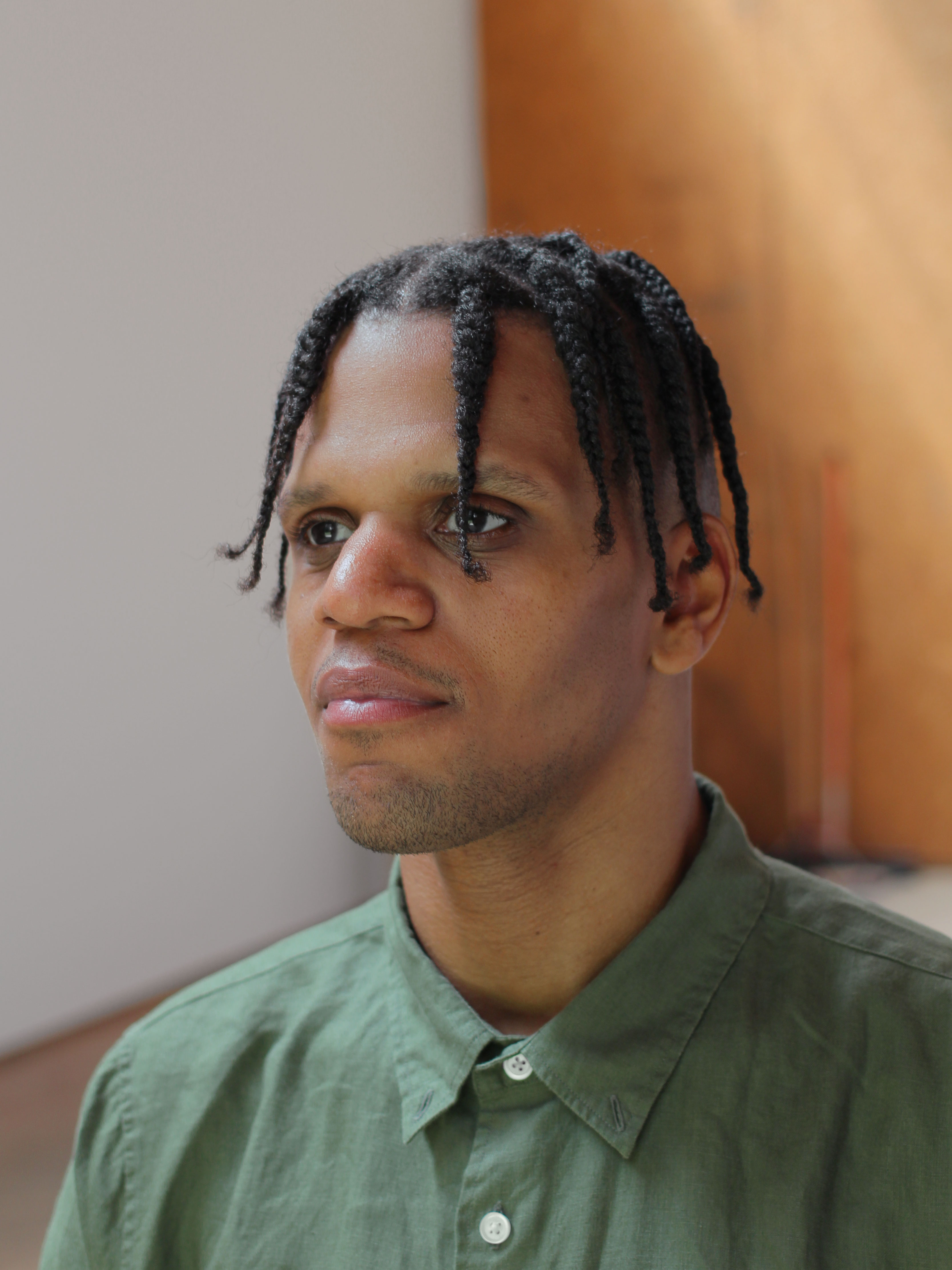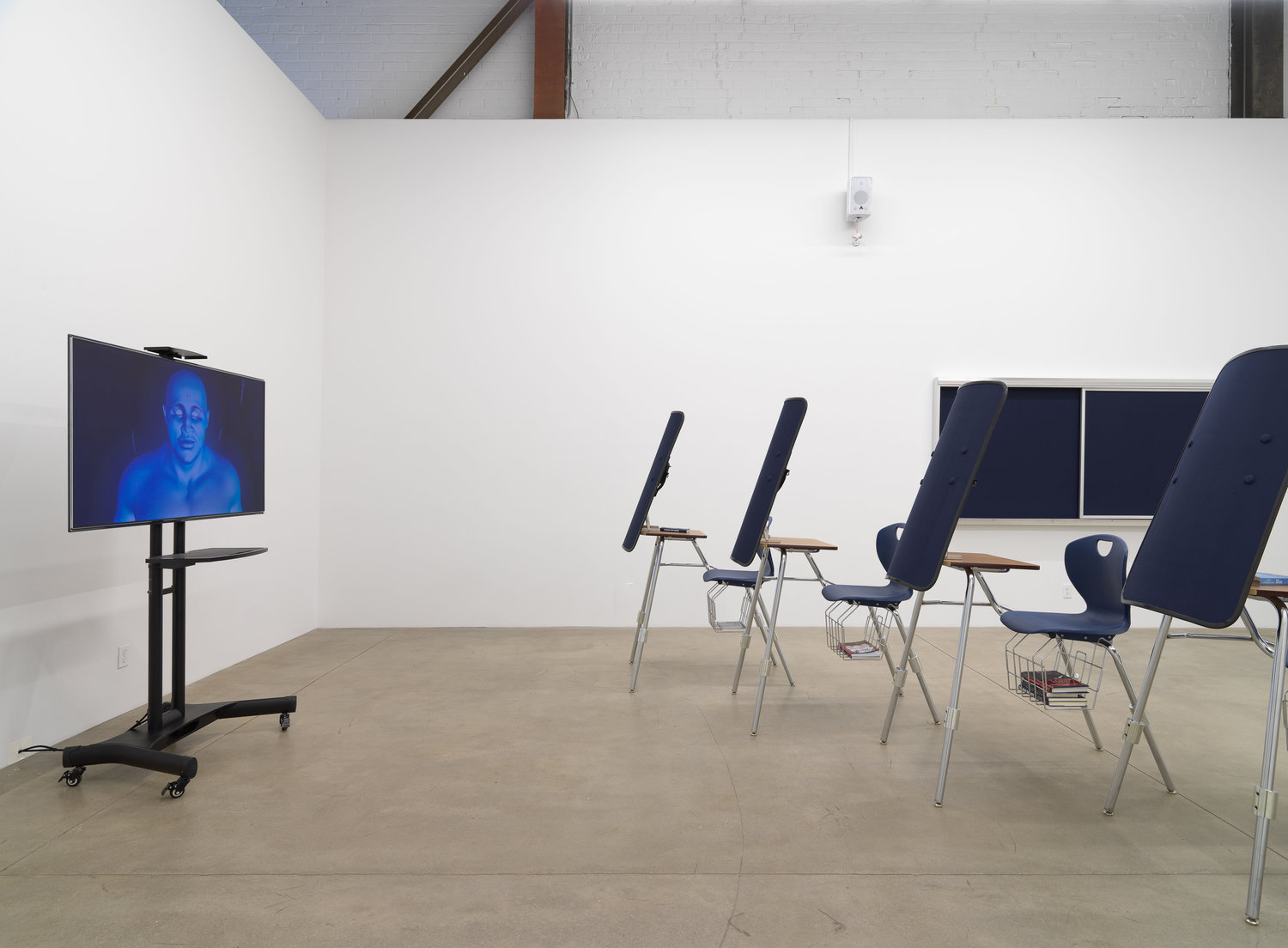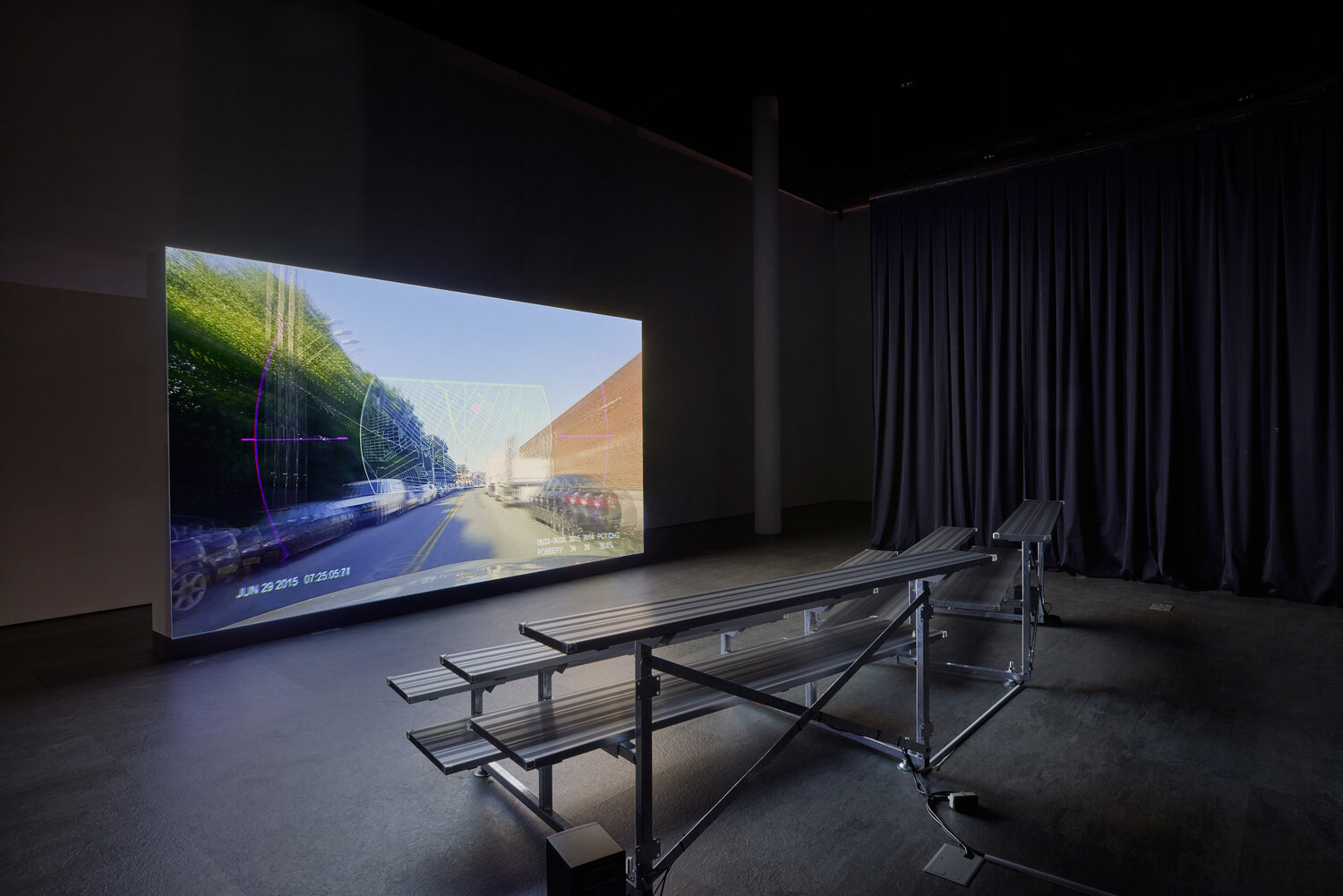
One artist who has shown extreme dedication to their craft, so much so that they have legally changed their name to reflect it, is American Artist. An artist dedicated to examining the intertwining of racism and technology within an ever increasing technologically oriented American society, Artist challenges the efficacy of established systems by highlighting how these systems do not treat everyone fairly in a country that considers itself the ‘land of the free.’

A piece of theirs that is particularly on the nose about their challenging of established systems happens to be aptly named ‘I’M BLUE (IF I WAS _____ I WOULD DIE).’ On first inspection this piece is a lot to take in, the presence of many unique elements intrinsically draws a viewer to become somewhat overwhelmed in deciphering what they are looking at and how these respective pieces fit together to form a message. After mulling over the piece, it becomes evident that the commentary of this piece relates to police culture, specifically the indoctrination disguised as education and training police receive. The most notable design element of this installation is that it is constructed as a classroom, complete with standard school desks. The teacher perse, is a monitor displaying a blue man with whites for eyes, who lectures in a soft monotone voice that ‘[he] is blue', '[his] presence is a threat to those around him,’ and ‘[he] never wished to be like this nor would [he] ever wish it upon his worst enemy.’ To further support this narrative of victimhood, this blue figure has a reticle stamped on his forehead, overtly implying that those that are blue like him are targets for violence.

There’s almost a sense of absurdity behind the theme of blue that becomes more pronounced as one’s gaze lingers; the notion for an entire worldview to be so rigidly and narrowly portrayed as a single color is preposterous, yet it becomes truer with each passing headline (Reid 2020). One of the points Artist makes is remarkably simple yet holds layers of depth; if police are taught they are a threat to everyone, so much so they become a target, then the corresponding response from police will be to treat everyone like they are a threat. Artist simply highlights how the ones most often interpreted as threats are Black people, clear by the literature present within this classroom, such as books titled, ‘Black Lies Matter or ‘Cop Under Fire.’ Furthermore, each desk’s view of the classroom is limited by a barrier installed at the frontward-facing side of the desk. Of special note is that these barriers are modeled after shields police use in riot control, illustrating the notion that one of the obvious barriers between people and the police is that police interact with people from behind a system that showers them in equipment to use upon the people.
A similar work created by Artist that highlights discrepancies in policing, albeit in a more abstract way when compared to the first piece discussed, is ‘My Blue Window.’ This piece solely utilizes a technological medium, depicting the dashboard footage from a police vehicle as it patrols a neighborhood. The camera screen space itself has an added technological overlay, which highlights people of interest as the vehicle makes its patrol rounds. Whereas Artist’s previous work relied on more subtle cues to the viewer that ultimately allow them to piece a message of police indoctrination, such as the saturation of blue to spotlight the police or the subtle placement of controversial books such as ‘The War on Cops,’ this piece is blunter in its approach to the viewer. Immediately, the viewer knows they’re watching from a police perspective by police sirens that chirp at frequent intervals.

The straightforwardness of this piece is done to depict the real consequences the originate from a faulty and biased training regimen; when patrolling through this industrial looking neighborhood, the only individuals that are both seen and flagged as persons of interest are Black people. Not only do these individuals not do anything besides exist in the camera’s view, after exiting this neighborhood, the screen displays a simple yet layered message, ‘Crime Deterred.’ Here we observe one of Zach Blas’ masks in biometric data, ‘the favoring of black in militant aesthetics (Russell 2020)’; that is, technology and by extension, the police who employ it, have transformed Black into the De facto color of criminality. In one swoop, Artist has drawn attention to two major problems in policing, of which both are enshrouded in prejudice; the first problem being the over policing of communities of color where police are not even needed in the first place as there is no illegality, and the second problem being the superfluous notion that something as simple as a police presence is the be all end all to crime. Ultimately, these two pieces combine to paint the narrative of policing as a tree whose rotten core of victimhood indoctrination in conjunction with material about which demographics might have the potential to be more threatening, can only produce rotten fruit who unjustly criminalize those they were taught are threats to police.

Another artist specializing in glitch art is Rob Sheridan, an artist whose extraordinary use of color challenges viewer perception at every turn. Of special note is ‘She Comes at Midnight,’ an image composed primarily of varying shades of blues and reds, each of which are respectively confined to one half. Like Artist’s ‘My Blue Window,’ this work is one of abstraction, a viewer could pick out multiple different pairs of figures dispersed throughout the image in addition to the two clearly defined female ones in the foreground. Instead of challenging the system of policing, Sheridan instead turns his attention to gender dynamics; all the different figures of couples besides the pair of women defined in the foreground appear androgynous. By making them indistinguishable in gender, Sheridan circumvents the associated norms and requirements that act as a metric to determine the validity behind an individual’s gender expression; ‘a body that pushes back at the application of pronouns, or remains indecipherable within binary assignment, is a body that refuses to perform the score (Russell 2020). In addition to the only clearly defined and detailed couple being women, Sheridan challenges the established default of heterosexual relationships. The use of warm and cool hues in tandem with the abstractness of bodies creates this canvas of color from which a viewer can explore the boundaries of gender.